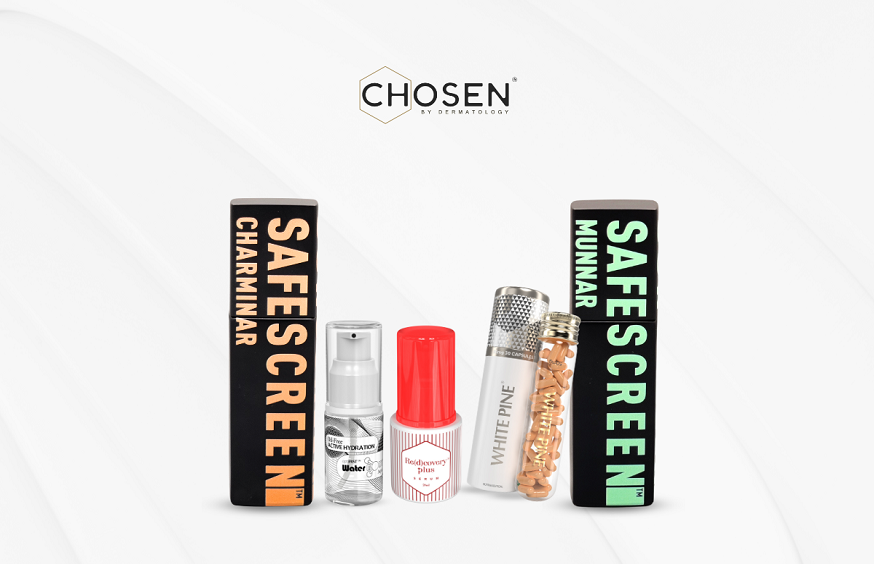Melasma, a common skin condition characterized by patches of discoloured skin, particularly on the face, can be a persistent and challenging concern for many individuals. However, with a tailored skincare routine and the utilization of scientifically proven products, managing melasma becomes more attainable. This comprehensive guide will explore effective strategies and evidence-based products to help reduce melasma and achieve a more even complexion.
Understanding Melasma:
Melasma manifests as brown or greyish patches on the skin, often occurring on the cheeks, forehead, upper lip, and chin. While the exact cause of melasma remains unclear, hormonal fluctuations, sun exposure, genetic predisposition, and certain medications are believed to contribute to its development. Recognizing these triggers is essential for implementing targeted treatment strategies.
Sun Protection: A Fundamental Step
Shielding the skin from harmful UV rays is paramount in managing melasma. Opting for a broad-spectrum sunscreen with a high SPF rating is essential to prevent further pigmentation issues. Mineral-based sunscreens, such as SAFESCREEN® Charminar for oily skin or SAFESCREEN® Munnar for dry skin, provide durable protection against UV damage while offering antioxidant benefits to combat environmental stressors. Consistent application and reapplication of sunscreen, especially during prolonged sun exposure, are critical for maintaining skin health and preventing melasma flare-ups.
Topical Treatments: Targeting Melanin Production
Incorporating topical agents that inhibit melanin production and promote skin renewal is key to addressing melasma. Ingredients like hydroquinone, kojic acid, azelaic acid, and retinoids are commonly used to fade hyperpigmentation and improve skin texture. The Re(d)covery® Plus face serum, formulated to work overnight, utilizes potent ingredients to fade dark spots gradually and even out skin tone, leveraging the skin’s natural repair processes. When used consistently as part of a nightly skincare routine, these targeted treatments can help reduce the appearance of melasma and promote a more radiant complexion.
Hydration and Moisturization: Customized Solutions
Maintaining adequate skin hydration is essential for overall skin health and can help support the efficacy of other skincare treatments. However, selecting the right moisturizer is equally crucial, as different skin types have varying needs. For oily skin, the lightweight formula of OptiMISTWaterBody® Aqua moisturizer provides hydration without clogging pores, while the Peptide Therapy Creme offers intense nourishment and repair for dry skin. Tailoring moisturization to individual skin needs ensures optimal hydration and supports overall skin function, helping to minimize the appearance of melasma and promote a smoother, more even complexion.
Supplementation with Oral Antioxidants: Internal Support
In addition to topical treatments, incorporating oral antioxidants into daily routines can provide internal support for managing melasma. White Pine® – Pycnogenol®, a natural supplement renowned for its antioxidant properties, aids in neutralizing free radicals and reducing oxidative stress. By enhancing the skin’s resilience from within, oral antioxidants contribute to a more even complexion over time. When combined with topical skincare products, oral supplements can provide comprehensive support for melasma management, helping to improve skin texture and reduce pigmentation irregularities.
Continue to read : write for us + fashion
Advanced Treatment Modalities: Exploring Innovative Solutions
In some cases, advanced treatment modalities may be recommended to address stubborn melasma and achieve optimal results. Procedures such as chemical peels, microdermabrasion, fractional laser therapy, and intense pulsed light (IPL) can target pigmentation irregularities and stimulate collagen production, helping to improve skin texture and tone. However, consulting with a qualified dermatologist or skincare professional is essential to determine the most appropriate treatment approach based on individual skin concerns and goals.
Lifestyle Considerations: Holistic Skin Health
Adopting healthy lifestyle habits can complement skincare efforts and promote overall skin health. Adequate hydration, balanced nutrition, stress management, and quality sleep are pivotal in supporting skin regeneration and resilience. Mindful practices and stress-reduction techniques can help minimize triggers for melasma flare-ups, contributing to improved treatment outcomes and long-term skin health.
Patient Education and Empowerment: Keys to Long-Term Success
Empowering individuals with knowledge about melasma triggers, treatment options, and skincare best practices is essential for sustained improvement. Emphasizing the importance of consistency, patience, and realistic expectations fosters long-term compliance and positive outcomes. With dedication and guidance from skincare professionals, individuals can navigate the challenges of melasma management and achieve significant improvements in skin appearance and confidence.
Also Read : write for us + technology
In conclusion, effectively managing melasma requires a multifaceted approach that addresses both external and internal factors influencing skin pigmentation. Individuals can take proactive steps toward reducing melasma and achieving a more radiant complexion by incorporating sun protection, targeted skincare products, oral antioxidants, advanced treatment modalities, lifestyle modifications, and patient education. With consistent adherence to a comprehensive skincare routine and the utilization of evidence-based products, managing melasma becomes more attainable, restoring confidence and promoting overall skin health.

